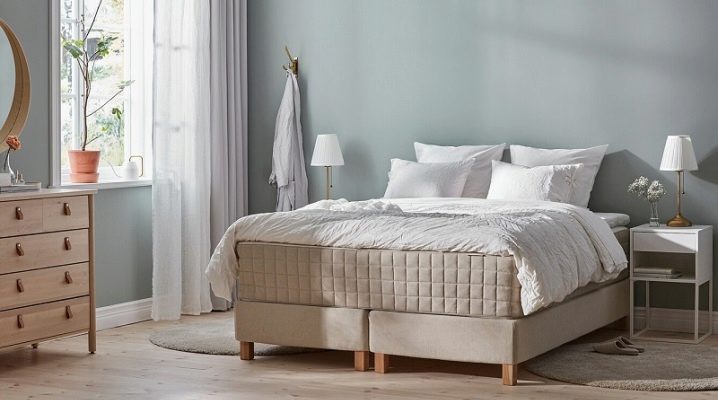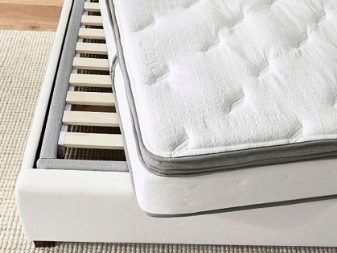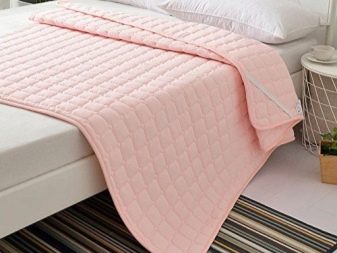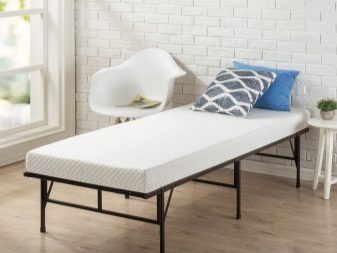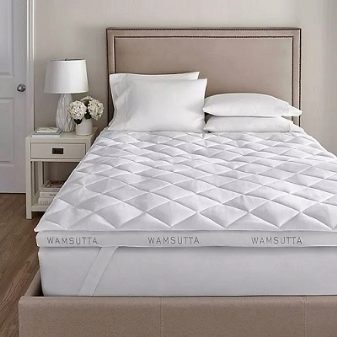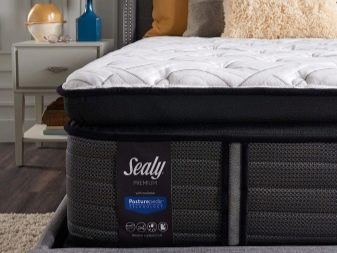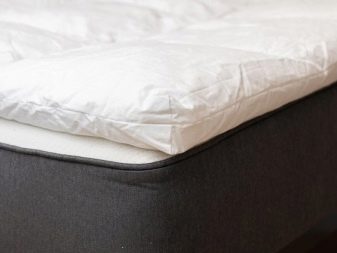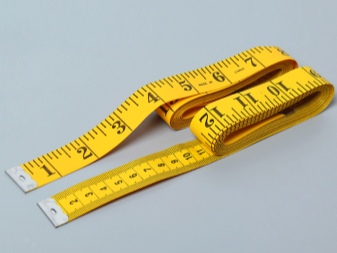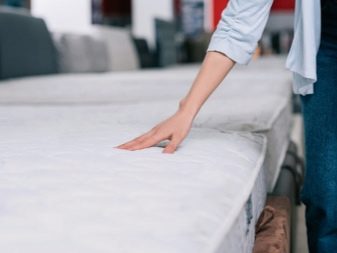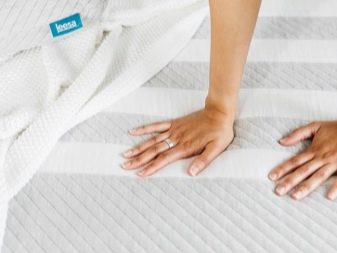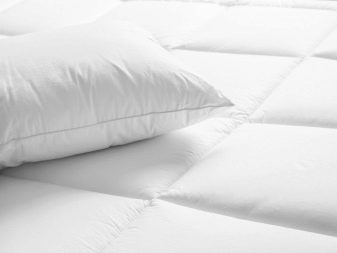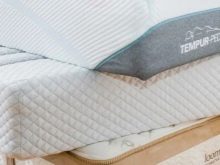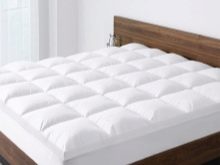What is the height of the mattress?
The comfortable arrangement of the bed largely depends on the correctly chosen mattress. When buying it, it is important not only to decide on the brand, but also not to be mistaken with the size. The thickness of the mattress is selected taking into account the individual parameters of a person: his weight, height, state of health. And also it is necessary to take into account the structural features of the bed and its overall dimensions.
What does it affect?
The height of the mattress (meaning its thickness) determines the quality of rest, as well as the effect on the skeleton and circulatory system during sleep. There is no one-size-fits-all thickness for everyone. A good mattress is a costly purchase that will take a long time to use, so it is important to be clear about what the height of this sleeping item affects.
- Comfortableness - this feature manifests itself in the best way in spring models. In the case when there is a thick outer layer above the spring blocks, people, even with a large body weight, will sleep comfortably, but if the thickness of such a layer is insufficient, the degree of comfort will be low.
- Orthopedic properties - the thickness of the berth should be such that during sleep the person retains the physiological S-shaped deflection of the spine. Insufficient height of the mattress will not be able to provide such a function, and after sleep you will feel back pain or numbness of the limbs.
- Distribution of the load on the berth - a person pushes a too thin mattress quite quickly, while the load from his weight will be shifted to a certain zone of the bed, as a result of which he will feel a hard surface with his body.
- Durability - high mattresses, equipped with solid spring blocks, last much longer than thin springless counterparts, which quickly crumble and lose their orthopedic properties.
The parameters of the load on the berth are indicated by the manufacturer on each product, in addition, the layers of the mattress are listed with a listing of the composition of the fillers. The buyer needs to determine the required ratio between the orthopedic properties of the product and its height.
Correctly selected bedding, taking into account rigidity, height and overall dimensions, will create the greatest degree of comfort during sleep than a mattress purchased according to average parameters.
Standard parameters of different mattresses
Sleeping mattresses are thin, medium, thick - manufacturers have a certain standard according to which the minimum, average or maximum height of products is maintained. Adults and children's options differ from each other, in addition, there are orthopedic types of models and common types.
Before purchasing a mattress, you need to decide for whom it will be intended, what type of bed is needed (thick or low), and also take into account the anatomical parameters and personal preferences of the person. There are generally accepted parameters for mattresses for adults and children.
Adults
The height of beddings intended for adult consumers depends on the design type of the product:
- standard with a spring block - thickness ranges from 15 to 18 cm;
- medium height with a spring block - from 18 to 30 cm;
- high exclusive options with springs - from 35-40 to 60 cm;
- standard springless - from 15-16 cm to 20 cm;
- high springless - from 20 to 24 cm;
- thin springless - from 8 to 10-12 cm;
- toppers - from 2–5 cm.
Thin springless models are more often used as mattress toppers, and toppers are placed over the main mattress to reduce the degree of its rigidity and increase the comfort of rest. When choosing a mattress, it should be borne in mind that it is advisable for older people to purchase options of medium softness with a height of 30–35 cm. These can be models from spring blocks, as well as springless options from latex or orthopene, coconut coir, sisal.
If a person's weight exceeds 90 kg, then to evenly distribute the load on the berth, only products with independent spring blocks should be chosen, the height of such products should not exceed 25 cm.
For children
For preschool children, including newborns, orthopedists recommend choosing the thickness of the mattress no more than 8 cm. Models without spring blocks, with a high degree of rigidity from sisal or coconut coir, are preferable. Schoolchildren are also shown a hard sleeping surface, but its height can already reach 15 cm.
The height of mattresses for children also depends on the construction type of the model:
- with spring blocks - 10-15 cm;
- springless options - 5-10 cm.
When choosing a bedding model, one should be guided by the principle: the younger the child, the thinner his mattress should be. Soft options are contraindicated for children, since they do not support the child's musculoskeletal system and contribute to the development of scoliosis.
How to measure?
Before buying a mattress, you need to take measurements of the bed. The length and width of the berth are interesting. The next step is to measure the product itself - its length, width and height. To obtain accurate data, the mattress is measured by spreading it out on a flat and hard surface. Determining the height is not so easy to perform as it seems at first glance, since the side of the product is not the whole mattress, the fact is that the cover put on it has its own relief and adds additional centimeters. The following technique will help to simplify the measurements: a rigid meter or board is placed on the surface of the product so that the ends extend beyond the product. Then measure the height from the edge of the board to the surface where the mattress is located.
According to GOST, bedroom furniture must have certain tolerances towards an increase in size. The height indicator at the niche for the mattress can be increased from the specified standard by 15 mm. Many bed models are equipped with special bumpers that hold the mattress in place. The height of the bedding will also depend on the height of such a side. Therefore, before choosing the height of the mattress, it is necessary to measure the height of the side and add 5 to 10 cm to the result.
In cases where the bed is made without sides, the mattress can be of any required thickness.
Nuances of choice
To choose the right mattress size, among other factors, you need to consider how it will be used. For example, a married couple will need a height that is optimal for a double bed. In addition, length and width parameters are important - the mattress should be bought taking into account the height of those who will sleep on it. There are also universal sizes of mattresses, but ideally it is better to choose the right size of the product, taking into account the type of bed.
- Beds with 2 tiers - for such models, you should not buy too thick bedding, so as not to unnecessarily hide the distance between the ceiling and the niche for sleeping. The distance between the tiers of the bed should be at least 80-85 cm, and between the 2nd tier and the ceiling, it is advisable to keep at least 60 cm. Based on such restrictions, the mattress height is selected from 10 to 20 cm, while it must be remembered that the thickness the mattress should not be more than the height of the side that keeps the person from falling during sleep.
- Convertible beds - we are talking about folding and wall-mounted models. In this case, the thickness depends not only on the height of the sides.The possibility of folding furniture is also taken into account, since a thick mattress will become an obstacle when storing bedding in the linen niche. When choosing a mattress for a transforming bed, you need to take into account the location of the lifting mechanism, which also imposes its own restrictions on the choice of the thickness of the product.
- Loft bed for children - such models are usually equipped with a special bar that protects the child from falling. Such a bar should rise above the mattress level by at least 15–20 cm.
There is an important rule - the thicker and heavier the mattress, the stronger the base and the niche of the bed intended for it should be. Another important parameter is the height of the bed (from floor level). The most convenient option is a model that, together with the mattress, reaches the level of a person's knee in a standing position, on average it is 45-50 cm from the floor. If you want to choose the height of the berth for your height, then in a sitting position on the bed with your legs lowered to the floor, a right angle should form. For older people, it is advisable to buy high mattresses, since such models allow a person to minimize stress on the joints when getting up, eliminating the need to squat, as would be necessary in the case of low bedding and bedding options.
An important role in the choice is played by the depth of the niche intended for the mattress. For example, if the depth is 5–10 mm, then the height of the sleeping item will be 20–25 cm, and for a niche depth of 12–15 mm, an option with a thickness of 25–30 cm is suitable.
The main rule in choosing a mattress for a bed with sides is that it should rise so much that a lying person does not touch the edge of the side, while taking into account that the product sags under the weight of the body. To take into account such a drawdown, experts advise adding at least another 5-10 cm to the selected size of the bedding.
